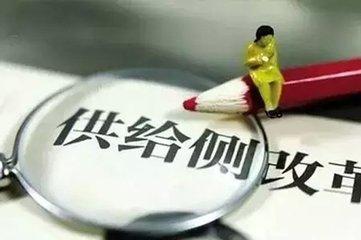BEIJING, Dec. 26 (Xinhua) -- Supply-side structural reform has been a catchphrase in China this year, and is set to remain a central theme of the nation's economic work in 2017 as it is expected to inject vitality into the world's second largest economy.
The reform has witnessed steady progress since China's policymakers proposed it at the end of 2015 to resolve structural imbalances in the economy.
Thanks to supply-side reform, the Chinese economy is ending 2016 on firm footing with the country looking like it will hit its annual growth targets.
In the first three quarters, the economy expanded 6.7 percent, well within the government's target range of between 6.5 and 7 percent.
Throughout the year, authorities have pressed ahead with five tasks: cutting industrial capacity, reducing the housing inventory, cutting leverage, lowering corporate costs and improving weak economic links.
A large number of zombie enterprises have been shut down this year. Industries plagued by overcapacity and lagging technology have been urged to move up the value chain to stay competitive.
China has met this year's target of reducing 45 million tonnes of steel and 250 million tonnes of coal production capacity, ahead of schedule.
The country has seen a continued decrease in the housing inventory. By the end of November, the inventory had fallen for nine consecutive months.
With business tax replaced by value-added tax, companies are expected to cut costs by over 1 trillion yuan (around 145 billion U.S. dollars) this year.
Due to targeted poverty alleviation measures, the country's poor population is forecast to fall by more than 10 million in 2016.
Unsurprisingly, China has also met with multiple challenges in carrying out reform.
Unexpected home price spikes in the first nine months pushed up residential leverage and swelled asset bubbles. Downsizing of the steel and coal sectors led to shrinking supply and shored up short-term prices, which impeded further reform. "Zombie companies" caused risks with unemployed workers and unresolved debts.
Despite the difficulties, policymakers have decided to stick with the reform in 2017 in a bid to address entrenched problems and find long-term growth momentum.
China will deepen supply-side structural reform next year, expanding reforms to more areas: overhauling the agricultural supply-side, reviving the real economy and stabilizing the property sector, according to the Central Economic Work Conference held earlier this month.




 A single purchase
A single purchase








